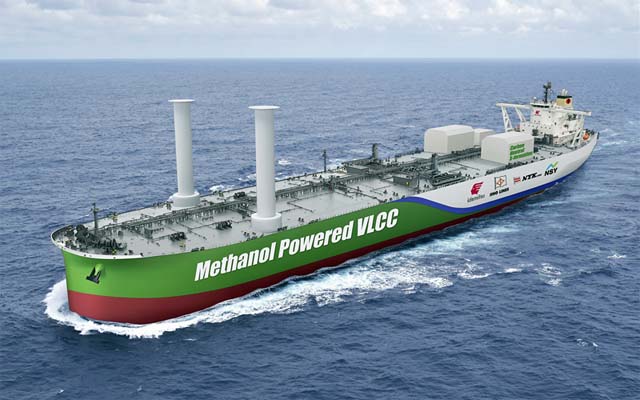A consortium comprising Idemitsu Tanker, IINO Lines, Nippon Yusen Kabushiki Kaisha (NYK), and Nihon Shipyard has produced a design concept for Japan’s first Malacca Max type VLCC to use methanol as fuel.
The vessel, 339.5m long with breadth of 60m, has a capacity of about 309,400 dwt. It will be equipped with a dual-fuel main engine capable of operating on methanol and HFO and a shaft generator as well as an optional rotor sail wind assistance system. A CO2 reduction of more than 40% compared to the reference line against the EEDI regulation is expected, exceeding EEDI Phase 3 (reduction of more than 30% compared to the reference line), which will apply from 2025.
Methanol is expected to contribute to the IMO GHG emission reduction strategy by reducing CO2 emissions by approximately 15% compared to the use of conventional fuel oil. In addition, the use of green methanol, such as bio-methanol produced from biomass and synthetic methanol (e-methanol) produced using hydrogen from renewable energy sources and captured CO2, can enable the reduction of CO2 emissions to net zero.
The four companies, which play a leading role in Japan-based energy transportation, will conduct further studies based on the design concept in order to achieve the international shipping goal of becoming carbon neutrality by 2050. Furthermore, the companies will aim for strategically phased shipbuilding orders for this next-generation eco-friendly VLCC and allocate vessels to crude oil transport for Japanese refineries as soon as possible.
Image: The design concept for an eco-friendly VLCC (source: Nippon Yusen Kabushiki Kaisha)



